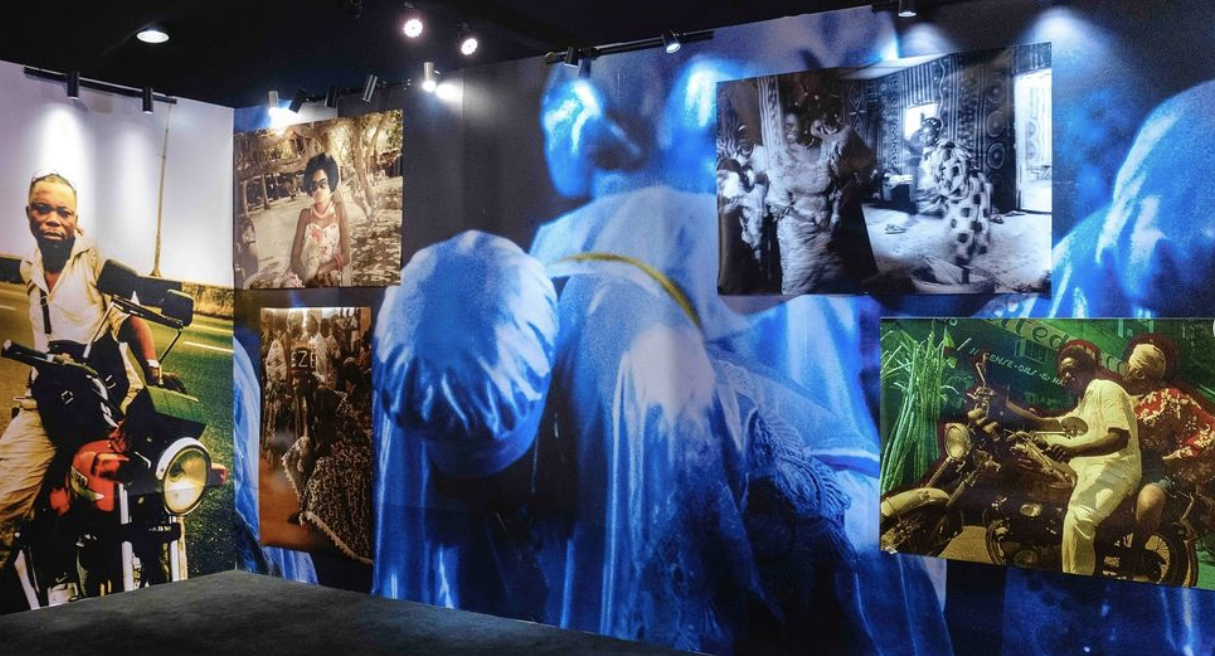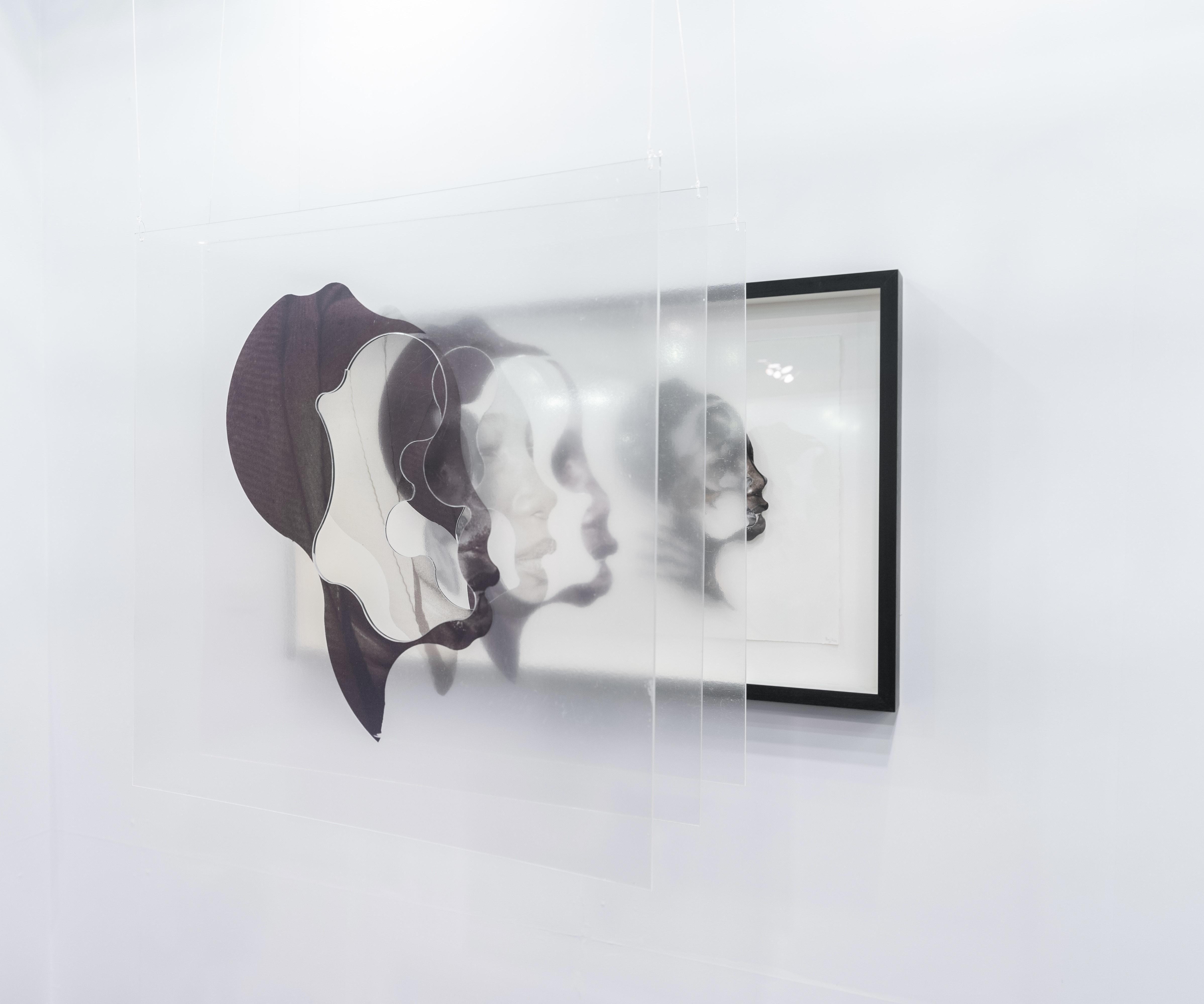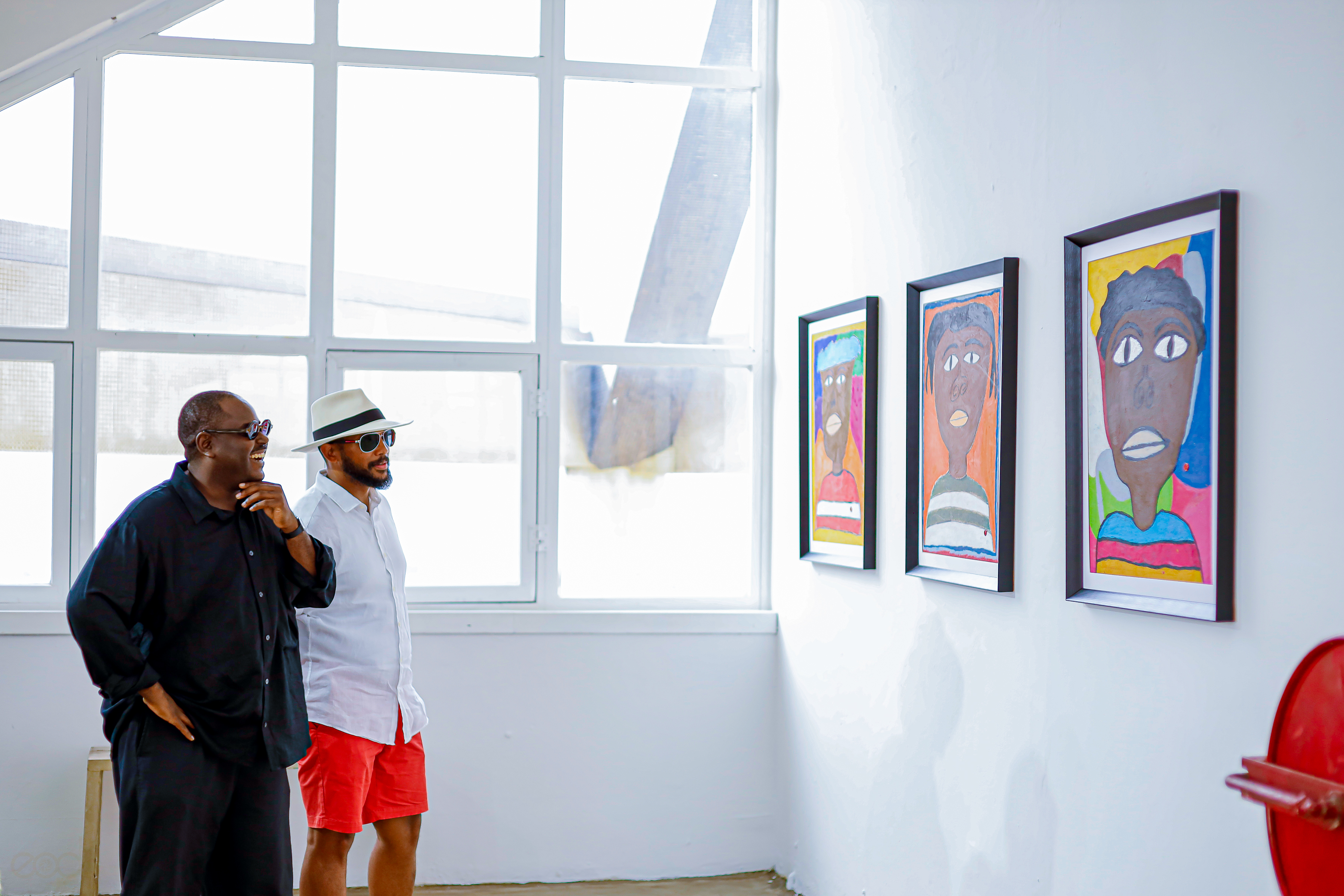The Nigerian art scene: in a moment of transformation
- by Mpumi Mayisa
 Ayoola Gbolahan
Ayoola Gbolahan
Nigeria stands at a pivotal moment of transformation, where a comprehensive view of its socio-economic and cultural landscape is essential. There is a growing call for introspection and alternative approaches to financial resilience, a reevaluation of traditional values, and a shift away from individualism toward collective well-being.
I touched down in Lagos just as Art Week began, leading up to the 9th edition of Art X Lagos. My trip was inspired by a curiosity to engage with what I’d observed to be an art ecosystem in bloom. I’d been peeking into the Lagos visual art scene through the internet for a few years, and observed that Nigerian artists were increasingly engaging with the natural world in profound ways. I spent my week moving through the city, experiencing it as a quilt with bright and withered colours, stitched together to make the whole. I came at a time marked by a continuing decline of the naira’s value, and witnessed how heightened luxury sits starkly beside austerity, both held within a city reckoning with infrastructural decay. The conversations I engaged in critiqued, among other factors, excess individualism and untamable systemic residue from colonial disruption. Situating myself in these tensions provided insight into how they impose on the art landscape, and contextualised the tendency to gesture with nature through material recomposition within artistic practice.
This year’s Art X Lagos took a distinct approach with only ten commercial galleries, aiming to balance commercial elements with a legacy-centred focus. This dual approach blended commercial interests and the essential inclusion of cultural and intellectual frameworks through interactive installations. Among the standout projects was Mark-Makers: Unsung Pioneers, an exhibition curated by Missla Libsekal, honouring overlooked Nigerian figures who impacted fields such as science, art, and social activism. Another notable exhibition, Restless Cities: From Lagos to the World, marked photographer Andrew Dosunmu's first solo exhibition in Africa, exploring Nigerian urban life and resilience. Art Week lent itself to the fair’s larger ethos, illuminating how artists, curators and practitioners continue to activate, reshape, and nourish the art ecosystem.
 Andrew Dosunmu, Restless Cities: From Lagos to the World, courtesy Art x Lagos
Andrew Dosunmu, Restless Cities: From Lagos to the World, courtesy Art x Lagos
The week began with a shared guide to Art Week, offering a thoughtful array of recommendations that led me to Wunika Mukan Gallery for a live painting session. The atmosphere was electric yet grounding, a rare harmony where the process of creation felt as tangible and immediate as the final work itself. It became evident that this week would be as much about witnessing the act of making as it was about appreciating the completed piece.The show, titled Eternal Life, was a solo exhibition by the renowned self-taught artist Edozie Anedu, who had transformed the gallery ceiling into a breathtaking mural that called to mind the reverence of chapel frescoes.The accompanying soundscapes deepened the experience, with rhythmic pulses and layered textures creating a sonic environment that heightened immersion and intimacy. The gallery served as a microcosm for Nigeria’s broader struggle with reconciling traditional religious values with the fluidity and adaptability needed for social and economic progress.
Browse a selection of Nigerian artists on Latitudes
I was intrigued by the artist's adeptness at conveying meaning through innovative use of materials and architectural forms, revealing dialogue between medium and space. Mobolaji Ogunrosoye’s collage practice interrogates themes of memory, agency, and identity. She situates her voice within the shifting dialogue of Nigeria's value systems, where traditional frameworks are gradually giving way to more progressive ideals that shape contemporary Nigerian identity and consciousness. In her Art X Lagos installation with Kó Gallery, Ogunrosoye‘s movable collage works offered an experiential view of the images, prompting the viewers to perceive each layer both as an individual component and as an integral part of a cohesive whole. The transparency of perspex emphasised the work’s fluidity, providing a continuous reconfiguration that speaks to the temporality and complexity embedded in contemporary Nigerian narratives.
 Mobolaji Ogunrosoye, courtesy Olayinka Eno Babalola
Mobolaji Ogunrosoye, courtesy Olayinka Eno Babalola
This focus on material innovation, particularly in relation to the Earth, lies at the heart of contemporary Nigerian sculpture practice, presenting a dynamic synergy between found, carved, and unearthed materials. The AMG Projects hosted an exhibition titled BIG Sculpture: An Anthology of Contemporary Nigerian Sculpture, curated by Mathew Oyedele, which encapsulated this energy, offering a platform for a cross-generational dialogue. Spanning established, mid-career, and emerging sculptors, the show anchored on, while moving past traditional boundaries, inviting exploration into how these varied materials engage with space and texture. Olubunmi Atere, a self-taught artist, occupies a significant position alongside her mentor, Djakou Kassi Nathalie, illuminating the vital role of established masters in guiding and supporting emerging talent. Atere’s work often combines tactile, earthy textures with vibrant, unconventional materials, from clay and fabric to found objects; she integrates traditional and contemporary elements. In this context, artists are not merely utilising natural materials but engaging in an active dialogue with them, coaxing out complex expressions of identity, memory, and transformation.
 Mobolaji Ogunrosoye, courtesy Olayinka Eno Babalola
Mobolaji Ogunrosoye, courtesy Olayinka Eno Babalola
The studio visits were an essential part of my trip, offering insights into the artists' processes and how connections with the personal and collective inform their conceptual approaches.
I had the privilege to visit Ayoola Gbolahan’s studio, this offered an intimate glimpse into the creative process of one of Nigeria’s most acclaimed contemporary artists. I was taken by Gbolahan's use of earth in his dotted series. Through imposing the earth on canvas, coupled with acrylic, pigments and glue, he grounds his work in a profound, tactile connection to the land. This interplay between the earthy material and the bold colour palette highlights Gbolahan's skillful negotiation of contrasts, underscoring the tension between the raw, foundational qualities of the earth and the expressive, energetic potential of colour.

While visiting emerging artist Timilehin Oludare’s studio, I discovered his multidisciplinary practice spanning sound, scent, and visual mediums. Inspired by his Nigerian upbringing, Oludare explores surrealism, conformity, escapism, and play. His use of red in his surrealist mixed media works is both symbolic and evocative, serving as a visceral reflection of the emotional and psychological toll of living within the complexities of Nigeria. He uses line drawing to speak to themes of death and decay, employing symbols such as birds and moonlight. These motifs offered valuable insights into the transitions within Nigerian society, highlighting what may be both ending and beginning.
 Timilehin Oludare, Reaching for pleasure, 2024, Price on request ENQUIRE on Latitudes
Timilehin Oludare, Reaching for pleasure, 2024, Price on request ENQUIRE on Latitudes
The week culminated with Life in Colour, an exhibition that masterfully explored the emotions and stories that define human existence. Curated by Fabia Alabraba, the bold use of colour and vivid imagery encouraged viewers to reflect on transformative moments that shift life from shades of grey into a vibrant, multifaceted tapestry, urging an embrace of the full spectrum of experience. Among the standout works were the mixed media paintings by Addie Mak, whose portrayal of chocolate-brown faces, with their child and doll-like quality, struck a perfect balance between innocence and depth. The figures, expressive yet subtly unreadable, exuded a sense of guarded emotion, which were affecting but not easily articulated. Their serious gazes hinted at a world of quiet introspection, evoking a sense of nostalgia. Layered textures and warm earthy tones provided a tactile depth to the pieces, as though the artworks themselves carried memories, inviting viewers into a space where innocence and maturity coexist, capturing an ineffable sense of familiarity and wonder.
 Addie Mak, In Living Colour
Addie Mak, In Living Colour
Nigeria stands at a pivotal moment of transformation, where a comprehensive view of its socio-economic and cultural landscape is essential. There is a growing call for introspection and alternative approaches to financial resilience, a reevaluation of traditional values, and a shift away from individualism toward collective well-being. Elements of the natural environment, especially water and land, provide a symbolic framework for reinterpreting Nigeria's challenges and transitions. Within this context, Art X Lagos balanced market demands with engagement in Nigeria's deeper consciousness, offering a meaningful response to the nation's evolving narrative.
Further Reading In Articles
African Artist Directory























